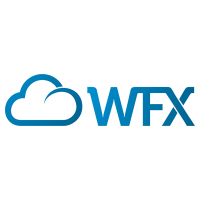How to find the best fashion PLM software for your business
-
Introduction
If you’re here, you already know that the benefits of using a PLM software are abundant. But a product lifecycle management software’s far reaching impact on business processes is exactly why finding the best PLM for your business is daunting!
When chosen and implemented well, PLM streamlines the entire design development journey for a business. But mismatched or inefficient PLM solutions can cost you millions in wasted time, money and resources. It can be a literal nightmare for your team!
Also Read: What is a Fashion PLM and why Fashion Brands need it?
Imagine this: you’ve spent precious time and money to implement a PLM software but it fails to extract any return on your investment. Your team spent weeks, often months, in adapting to and using the system. And now you’re locked in. You must continue using it even if your business is no better at the end of this ordeal.
This can be an embarrassing situation for any manager and/or business owner. But it doesn’t have to be. Use this guide to find the best Fashion PLM for YOUR business, while keeping the cost of implementation low and ROI high.
-
How to find the best fashion PLM software for your business
Here is a step-by-step guide to everything you need to consider before investing in an apparel PLM software:
1. Evaluate your business needs and problem areas
Before investing your time and money into purchasing a PLM software, take stock of how your business functions. You should understand how teams are spread out, how they collaborate and what challenges they face.
Make a note of where your current processes fall short. For fashion businesses, processes like documentation, communication with vendors, raising purchase orders are some of the biggest time killers. A good lifecycle management solution that’s designed for the fashion industry should help you streamline your supply chain for speed, accuracy and minimize loss of profit.
Keep in mind your growth strategy and expansion plans as well. This is important for making sure that you pick a software that won’t become outdated or restrict your workflow as the company grows over time.
2. Match features and functionalities with your needs
You may be tempted to look for the most affordable option. But don’t be too quick to judge PLM tools. Before making a choice, consider what you want get out of the software. Jot down your long-term goals and how you would want a PLM software will help you achieve them.
In short: think hard about what features are essential and which ones are nice to have.
Great PLM tools don’t just help you track inventory; it should also help streamline supply chain sourcing and manufacturing process. You should also consider the time factor. How easy is the software to use on a day-to-day basis, and how much support will you receive? Some systems might take extra time to learn but be worth that extra effort in the long run.
3. Cloud vs on-premise software: pick your winner
Trying to choose between cloud-based and on-premise systems can be confusing because there are many factors to consider, including whether your company already uses one of these systems and whether you want to continue using it or switch over to a new one altogether.
Advantages of a cloud-based PLM over an on-premise system:
- It’s more affordable – A cloud solution costs less upfront because there’s no need for hardware installation. This makes it more affordable because there’s no need to hire in-house technology staff or IT contractors with specific experience in your industry.
- It’s more flexible – It’s easier to scale up or down depending on your business needs, so you’re never paying for more capacity than you need.
- It helps you stay connected – Cloud technology allows you to work seamlessly online and off, helping you stay better connected with partners and customers around the world.
- It’s always updated – Being connected to the cloud means new updates happen automatically. You don’t have to buy or manually update your systems to the latest version every time the tech is upgraded.
4. Check user-friendliness and ease of access
Process changes affect the whole organization. The goal of a PLM software is to improve the day-to-day experience of the team. This is why you should consult the executive team and those who will use the PLM to see if the software’s information management systems are agile, intuitive and easy to use.
For fashion users, a good user interface and visual experience may be just as important as the functionalities for financial management. Whereas the costing department might need the cost sheets to be organized in a certain way. Keeping everyone in the loop will ensure an easy transition as well
5. Seamless onboarding and support are crucial
It can often take a long time to implement the actual PLM platform in your company. The onboarding process can take around 5-6 months and requires professional support from the software provider.
The best fashion PLM companies offer full-service packages that include installation and training. Before buying from a PLM subscription, ask these questions:
- Does this software provider have experience with companies from your industry?
- How much time does it take for the company’s teams to implement the software?
- Will they send someone to help your team learn the software in person?
- Do they have any case studies of that can help you understand the process?
- What kind of support do they offer? Are they accessible by phone?
- How well does the company provide after-sales service?
6. Review security standards of the provider
As a fashion PLM software, one of the most important things to consider is that it’s secure. Fashion and apparel companies are especially vulnerable to data theft. Their intellectual property (IP) is everything to their business. They want to make sure that their IP is protected at all costs.
This can be done by checking the company’s security certifications, the years it has been in business and the market image. For example, the WFX fashion software has achieved the ISO 27001 certification which shows that WFX follows the best global practices of information security. For you, this means protection for your most vital assets like employee and client information, brand image and other private data.
7. Prioritize customizability and personalization
No two businesses have the same needs. So, why should your PLM set-up be a basic out-of-the-box software? Look for a solution that can align with your product cycle, be customized to your business needs, and provide you with the right automation and integration features.
From the insight and analytics reports to the number of stages in the fashion product cycle, an apparel PLM software needs to be personalized to each business. It should also be flexible and adapt along with the evolution of your company.
8. Look for ease of integration
No matter the size of your brand, it is likely that you’re already using several software and systems such as NetSuite, ERP or Adobe Illustrator. This means that your PLM software must seamlessly integrate with other systems to avoid disruption and duplicity.
For instance, WFX PLM can easily pull and push everything from product data, attributes, images, to costing plans and orders from different systems. You can simply drag and drop Adobe AI files to build Tech Packs. Being the only fashion PLM with a ‘Built for NetSuite’ certified connector, the WFX and NetSuite platforms can talk to each other and stay in sync. For you, this means changes on one platform will automatically get updated on the other.
9. Use a demo or free trial to your advantage
While I can go on and on about everything to keep in mind, the best way to know if a product is right for you is to test it out yourself. Just like how you would never buy a car without a test drive, you should not buy a PLM software without a demo.
Request a free demo of the WFX Fashion PLM here! Check how easy it is for you to use it in practice, if it has all features that you need, can you personalize it to your needs and more. Try to find answers to your questions before making the final commitment.
-
Key takeaway
Following these steps in your hunt for the best fashion PLM should set you on the right path. Once you have made the decision, make sure you evaluate your return on investment. Measure the benefits of a PLM solution on the basis of three main criteria: cost reductions, time savings and increased revenue from new or existing products.
Implementing a PLM should result in visible improvement in speed to market, cost reductions, quality improvement and waste reduction. Choose a product with a proven track record and ask questions wherever you’re unsure!
If you want to learn more about how WFX’s PLM solution can help your business grow, sign up for a demo!










